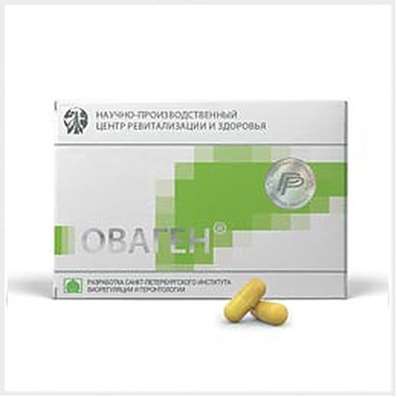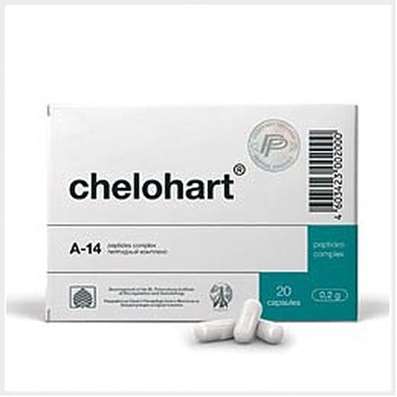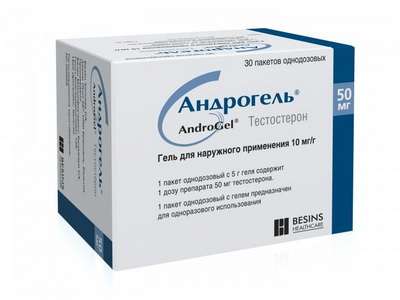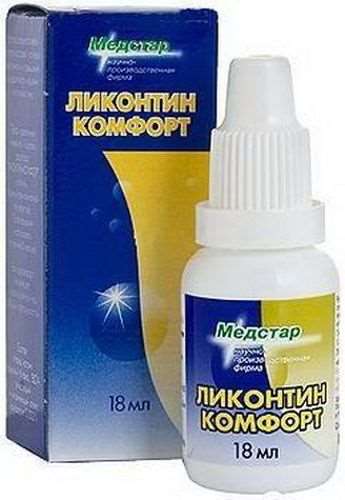Instruction for use: Chloropyramine
I want this, give me price
The Latin name of the substance Chloropyramine
Chloropyraminum (genus. Chloropyramini)
Chemical name
N - [(4-Chlorophenyl) methyl] -N ', N'-dimethyl-N-2-pyridinyl-1,2-ethanediamine (and as hydrochloride)
Gross formula
C16H20ClN3
Pharmacological group
H1-Antihistamines
The nosological classification (ICD-10)
H10.1 Acute atopic conjunctivitis: Allergic conjunctivitis; Allergic eye diseases; Allergic conjunctivitis; Allergic conjunctivitis caused by chemical and physical factors; Allergic rhinoconjunctivitis; Allergic inflammation of the eyes; Spring Qatar; Spring keratitis; Spring conjunctivitis; Conjunctivitis allergic; Year-round allergic conjunctivitis; Exacerbation of pollinosis in the form of rhinoconjunctival syndrome; Acute allergic keratoconjunctivitis; Acute allergic conjunctivitis; Superficial bacterial infection of the eyes; Rhinoconjunctivitis; Seasonal allergic conjunctivitis; Seasonal conjunctivitis; SENSORY; Chronic allergic keratoconjunctivitis; Chronic allergic conjunctivitis
J06 Acute upper respiratory tract infections of multiple and unspecified locations: Frequent colds of viral diseases; Infections of ENT organs; Acute respiratory illness of influenza nature; Pain for colds; Acute catarrhal disease; Cold; Colds; Colds; Respiratory infection; Seasonal catarrhal disease; Seasonal colds; Pain in infectious and inflammatory diseases of the upper respiratory tract; Bacterial infections of the upper respiratory tract; Bacterial infections of the respiratory system; Viral respiratory disease; Viral respiratory tract infections; Inflammatory disease of the upper respiratory tract; Inflammatory diseases of the upper respiratory tract; Inflammatory diseases of the upper respiratory tract with difficult to separate sputum; Inflammatory respiratory disease; Secondary infections for colds; Difficult sputum separation in acute and chronic respiratory diseases; Upper respiratory tract infections; Infections of the upper respiratory tract; Respiratory tract infections; Respiratory and lung infections; Infectious-inflammatory diseases of the upper respiratory tract; Infectious-inflammatory diseases of the upper respiratory tract and ENT organs; Infectious-inflammatory diseases of the upper respiratory tract in adults and children; Infectious-inflammatory diseases of the upper respiratory tract; Infectious inflammation of the respiratory tract; Respiratory tract infection; Qatar upper respiratory tract; Catarrh of the upper respiratory tract; Catarrh of the upper respiratory tract; Catarrhal phenomena from the upper respiratory tract; Cough in diseases of the upper respiratory tract; Cough for colds; ARVI; ARI; ARI with phenomena of rhinitis; Acute respiratory infection; Acute infectious-inflammatory disease of the upper respiratory tract; Acute respiratory disease; Persecution in the throat or nose; Respiratory and viral infections; Respiratory diseases; Respiratory infections; Recurrent respiratory tract infections; Secondary infections with influenza; Influenza states; Feverish conditions for influenza
J30 Vasomotor and allergic rhinitis: Allergic rhinopathy; Allergic rhinosinusopathy; Allergic diseases of the upper respiratory tract; Allergic rhinitis; Allergic rhinitis seasonal; Vasomotor runny nose; Prolonged allergic rhinitis; All-year-round allergic rhinitis; All-year allergic rhinitis; Year-round or seasonal allergic rhinitis; All-the-year-round rhinitis of an allergic nature; Rhinitis vasomotor allergic; Exacerbation of pollinosis in the form of rhinoconjunctival syndrome; Acute allergic rhinitis; Edema of the nasal mucosa; Edema of the nasal mucosa; Edema of the mucous membrane of the nasal cavity; Swelling of the nasal mucosa; Swelling of the nasal mucosa; Pollinosis; Permanent allergic rhinitis; Rhinoconjunctivitis; Rhinosinusitis; Rhinosinusopathy; Seasonal allergic rhinitis; Seasonal allergic rhinitis; Hay rhinitis; Chronic allergic rhinitis; Allergic diseases of the respiratory tract
J45 Asthma: Asthma of physical effort; Asthmatic conditions; Bronchial asthma; Bronchial asthma of light course; Bronchial asthma with difficulty in sputum discharge; Bronchial asthma of severe course; Bronchial asthma physical effort; Hypersecretory asthma; The hormone-dependent form of bronchial asthma; Curbing asthma attacks with bronchial asthma; Non-allergic bronchial asthma; Night Asthma; Exacerbation of bronchial asthma; Attack of bronchial asthma; Endogenous forms of asthma; Night attacks of asthma; Cough with bronchial asthma
L20 Atopic dermatitis: Allergic diseases of the skin; Allergic skin disease noninfectious etiology; Allergic skin disease etiology nemikrobnoy; Allergic skin diseases; Allergic skin lesions; Allergic reactions on the skin; atopic dermatitis; Allergic dermatosis; Allergic diathesis; Allergic itching dermatosis; Allergic skin disease; Allergic skin irritation; allergic Dermatitis; atopic Dermatitis; allergic dermatoses; exudative diathesis; Itchy atopic eczema Itchy allergic dermatosis; Allergic skin disease; Cutaneous allergic reaction to drugs and chemicals; Cutaneous reactions to medications; Skin and allergic disease; Acute eczema; common neurodermatitis; Chronic atopic dermatitis; Exudative diathesis
L23 Allergic contact dermatitis: Allergic dermatitis;Purulent allergic dermatopathies; Contact allergic reaction; Contact allergic dermatitis; Contact allergic dermatitis; Photoallergic contact dermatitis
L29 Itching: Itching with partial obstruction of the biliary tract; Dermatitis itchy; Dermatosis with persistent itching; Other itching dermatoses; Itching dermatoses; Itching allergic dermatosis; Itching dermatitis; Itching dermatosis; Itching itch; Excruciating itching; Severe itching; Endogenous itching; Skin itching with dermatosis; Restricted itchy dermatitis; Itching of the skin; Itchy scalp; Itching eczema
L30.9 Unspecified Dermatitis: Allergic dermatoses complicated by a secondary bacterial infection; Anal eczema; Bacterial maturation; Varicose Eczema; Venous dermatitis; Inflammation of the skin; Inflammation of the skin upon contact with plants; Inflammatory Skin Disease; Inflammatory Skin Diseases; Inflammatory Skin Diseases; Inflammatory skin reactions; Inflammatory processes of the skin; Hypostatic dermatitis; Fungal Eczema; Fungal dermatosis; Dermatitis; Dermatitis is stagnant; Dermatitis and eczema in the anal area; Dermatitis acute contact; Perianal dermatitis; Dermatosis; Dermatosis of the scalp; Dermatosis of psoriasis; Dermatosis with persistent itching; Dermatoses; Dermatoses itchy; Other itching dermatoses; Significant eczematous manifestations; Itching with dermatoses; Itching eczema; Itching dermatoses; Itching dermatitis; Itching dermatosis; True eczema; Skin reaction to insect bites; Skin itching with dermatosis; Constitutional eczema; Weeping eczema; Drowsing inflammatory skin disease; Dying Infectious-Inflammatory Skin Disease; Non-allergic dermatitis; Nummular eczema; Acute contact eczema; Acute inflammatory skin disease; Acute dermatosis; Acute severe dermatosis; Perianal dermatitis; Superficial dermatosis; Subacute Contact Eczema; Simple dermatitis; Occupational dermatitis; Psychogenic dermatosis; Bubble dermatitis of newborns; Pustular eruptions; Irritation and redness of the skin; Low-flammable eczema; Dry atrophic eczema; Dry eczema; Toxic dermatitis; Ear eczema like dermatitis; Chronic eczema; Chronic dermatosis; Chronic dermatosis; Chronic common dermatosis; Scaly papular dermatosis; Eczema; Eczema anal region; Eczema of the hands; Eczema Contact; Eczema lichenized; Eczema Nummular; Eczema acute; Eczema acute contact; Eczema subacute; Eczematous dermatitis; Eczema-like rashes; Ecome exogenous; Endogenous eczema; Gluteal dermatitis; Limited itching dermatitis
L50 Urticaria: Idiopathic chronic urticarial; Injury Urticaria; Chronic urticarial; Hives of the newborn
T78.3 Angioedema: Edema Quincke; Laryngeal exacerbation with angioneurotic edema; Recurrent angioedema; Allergic edema; Recurrent swelling of Quincy
T78.4 Unspecified Allergy: Allergic reactions to insulin; Allergic reactions to insect stings; Allergic reactions similar to systemic lupus erythematosus; Allergic diseases; Allergic diseases of mucous membranes; Allergic diseases and conditions resulting from increased release of histamine; Allergic diseases of mucous membranes; Allergic symptoms; Allergic symptoms in the mucous membranes; Allergic reactions; Allergic reactions caused by insect bites; Allergic reactions; Allergic conditions; Allergic laryngeal edema; allergopathy; allergic conditions; Allergy; House dust allergy; Anaphylaxis; Cutaneous reactions to medications; Skin reaction to insect stings; Cosmetic allergy; Drug allergy; Acute allergic reaction; Laryngeal edema allergic genesis and background radiation; Food and drug allergy
T80.6 Other serum reactions: Serum disease; Allergic reaction like serum sickness; Serous disease accelerated
Y40-Y59 Drugs, medicines and biological substances that cause adverse reactions during therapeutic use
CAS Code
59-32-5
Characteristics of the substance Chloropyramine
Derivative of ethylenediamine.
Pharmacology
Pharmacological action - antispasmodic, anti-allergic, antihistamine, anticholinergic, hypnotic, sedative.
It blocks histamine H1 receptors and m-cholinergic receptors. Weaken the spasmogenic effect of histamine on the smooth muscles of the bronchi and intestines, reduce its hypotensive effect and influence on the permeability of blood vessels. Prevents development and facilitates the course of allergic reactions of immediate type. Has antipruritic, sedative and hypnotic action. Has moderate peripheral anticholinergic and spasmolytic activity.
When ingested completely and quickly absorbed. The concentration in the blood reaches a maximum within 2 hours and remains at the therapeutic level for 4-6 hours. It is evenly distributed in the body, penetrates through the BBB. Metabolized in the liver, excreted by the kidneys and intestines.
Application of the substance Chloropyramine
Allergic diseases (urticaria, rhinitis, conjunctivitis, pollinosis, angioedema, serum sickness), medical allergy, skin diseases (eczema, contact dermatitis, neurodermatitis, skin itch, toxicodermia), the initial stages of bronchial asthma of the lung course (as part of complex therapy), Acute respiratory infections and intestinal infections in children (in combination with antipyretics).
Contraindications
Hypersensitivity, incl. To other derivatives of ethylenediamine, zakratougolnaya glaucoma, adenoma of the prostate with a marked violation of urodynamics, pregnancy, breast-feeding, early infancy (up to 1 month).
Restrictions on the use
Exacerbation of erosive and ulcerative diseases of the digestive tract, delay of urination.
Application in pregnancy and lactation
Contraindicated. For the duration of treatment, breastfeeding should be stopped.
Side effects of the substance Chloropyramine
From the nervous system and sensory organs: lethargy, weakness, slowing of psychomotor reactions, drowsiness, dizziness, impaired coordination of movements.
On the part of the intestine: dry mouth, nausea, gastrointestinal disorders; Rarely - gastralgia.
Interaction
Funds alkalinizing urine, increase, and acidifying - weaken the therapeutic and side effects. Increases the risk of seizures on the background of analeptics. Strengthens the action of narcotic analgesics, general and local anesthetics, hypnotics and sedatives, ethyl alcohol. Tricyclic antidepressants contribute to the manifestation of m-cholinolytic effects and inhibitory effects on the central nervous system. Barbiturates can accelerate metabolism and weaken effects. The depressant effect on the central nervous system is lowered by caffeine and phenamine, enhanced by clonidine.
Overdose
Symptoms: in adults - inhibition, depression, impaired consciousness up to coma, psychomotor agitation, convulsions, rarely hyperemia, hyperthermia. Children - mydriasis, hyperemia and hyperthermia, anxiety, agitation, hallucinations, ataxia, athetosis, convulsions, collapse, coma.
Treatment: gastric lavage, the appointment of activated charcoal, salt laxatives, maintenance of the cardiac and respiratory system, if necessary, anticonvulsant therapy, IVL.
Routes of administration
Inside.
Precautions for the substance Chloropyramine
In acute allergic and anaphylactic reactions, treatment starts with IV injections, then goes to IM. When used in children, strict medical supervision is necessary (possibly a manifestation of hypersensitivity). In the initial period of therapy, it is prohibited to drive vehicles and engage in activities requiring a rapid mental and motor reaction. It is necessary to exclude the use of alcoholic drinks during treatment.

 Cart
Cart





